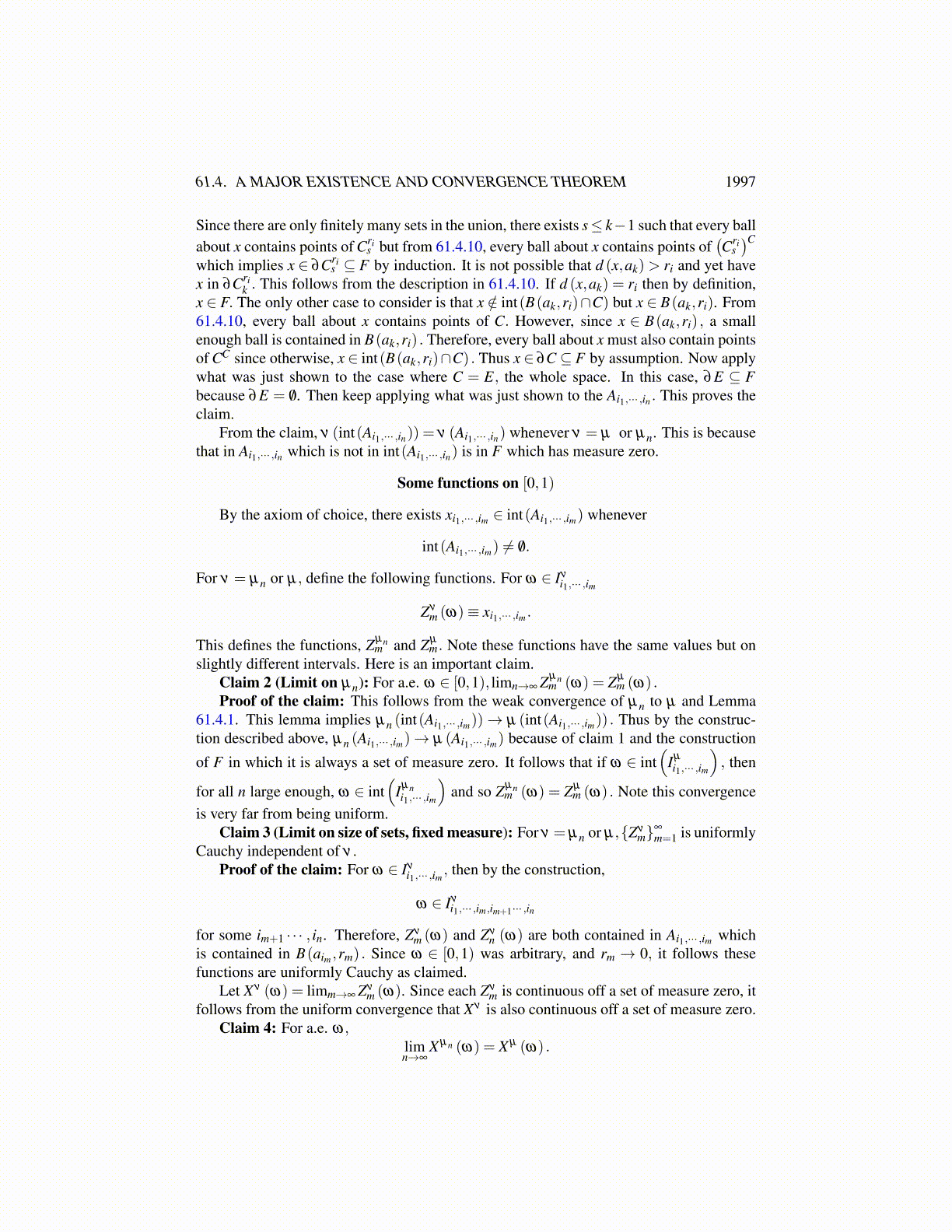
61.4. A MAJOR EXISTENCE AND CONVERGENCE THEOREM 1997
First I will describe a construction. Letting C ∈B (E) and r > 0,
Cr1 ≡ C∩B(a1,r) ,Cr
2 ≡ B(a2,r)∩C \Cr1, · · · ,
Crn ≡ B(an,r)∩C \
(∪n−1
k=1Crk).
Thus the sets, Crk for k = 1,2, · · · are disjoint Borel sets whose union is all of C. Of course
many may be empty.Cr(size)
n(index of the {ak} it is close to)
Now let C = E, the whole metric space. Also let {rk} be a decreasing sequence of positivenumbers which converges to 0. Let
Ak ≡ Er1k , k = 1,2, · · ·
Thus {Ak} is a sequence of Borel sets, Ak ⊆ B(ak,r1) , and the union of the Ak equals E.For (i1, · · · , im) ∈ Nm, suppose Ai1,··· ,im has been defined. Then for k ∈ N,
Ai1,··· ,imk ≡ (Ai1,··· ,im)rm+1k
Thus Ai1,··· ,imk ⊆ B(ak,rm+1), is a Borel set, and
∪∞k=1Ai1,··· ,imk = Ai1,··· ,im . (61.4.9)
Also note that Ai1,··· ,im could be empty. This is because Ai1,··· ,imk ⊆ B(ak,rm+1) but alsoAi1,··· ,im ⊆ B(aim ,rm) which might have empty intersection with B(ak,rm+1) . Applying61.4.9 repeatedly,
E = ∪i1 · · ·∪im Ai1,··· ,im
and also, the construction shows the Borel sets, Ai1,··· ,im are disjoint. Note that to getAi1,··· ,imk, you do to Ai1,··· ,im what was done for E but you consider smaller sized pieces.
Construction of intervals depending on the measure
Next I will construct intervals, Iνi1,··· ,in in [0,1) corresponding to these Ai1,··· ,in . In what
follows, ν = µn or µ . These intervals will depend on the measure chosen as indicated inthe notation.
Iν1 ≡ [0,ν (A1)), · · · , Iν
j ≡
[j−1
∑k=1
ν (Ak) ,j
∑k=1
ν (Ak)
)for j = 1,2, · · · . Note these are disjoint intervals whose union is [0,1). Also note
m(Iν
j)= ν (A j) .
The endpoints of these intervals as well as their lengths depend on the measures of the setsAk. Now supposing Iν
i1,··· ,im = [α,β ) where β −α = ν (Ai1··· ,im) , define
Iνi1··· ,im, j ≡
[α +
j−1
∑k=1
ν(Ai1··· ,im,k
),α +
j
∑k=1
ν(Ai1··· ,im,k
))